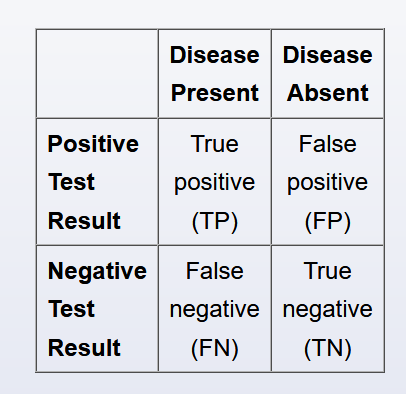PPV is highest with highest specificity
- related: Biostats
- tag: #literature

The sensitivity of a test, given by TP / (TP + FN), is the probability that a patient with a given disease will have a positive result on that test; for a highly sensitive test, a negative result helps rule out a disease (SnNout). Higher sensitivity means fewer FNs. Similarly, the specificity of a test, given by TN / (TN + FP), is the probability that a patient without a given disease will have a negative test result on that test; for a highly specific test, a positive result helps rule in a disease (SpPin). Higher specificity means fewer FPs.
Positive predictive value (PPV), given by TP / (TP + FP), is the probability that a positive test correctly identifies an individual with the disease. Because higher specificity is associated with fewer FPs, higher specificity will, in the vast majority of cases, increase the PPV of the test (because FP is the denominator of PPV). In this case, the test with highest specificity (97%) is the best choice as it will most likely also has the highest PPV.
Negative predictive value (NPV) is the probability that a negative test result correctly identifies an individual who does not have the disease. A higher sensitivity leads to fewer false negatives and increases the NPV of the test. In this case, the test has a 100% sensitivity, implying no false negatives and a NPV value of 100%.
Predicative Values
Positive predictive value (PPV) refers to the probability that a positive test result correctly identifies an individual who actually has the disease. Negative predictive value (NPV) is the probability that a negative test result correctly identifies an individual without the disease. Although useful, both PPV and NPV depend on disease prevalence.